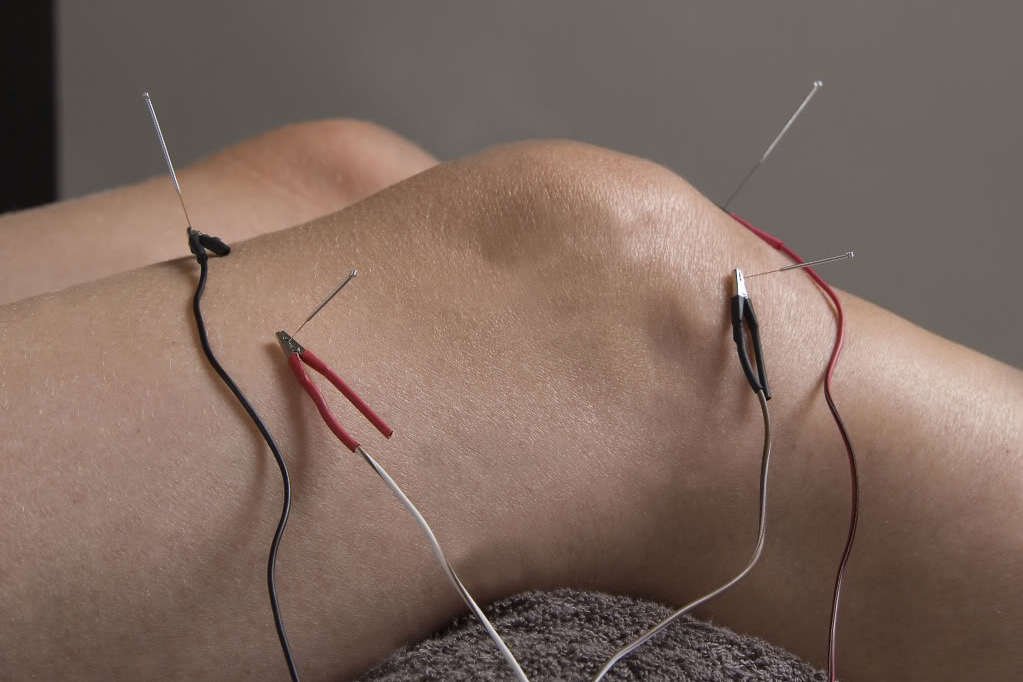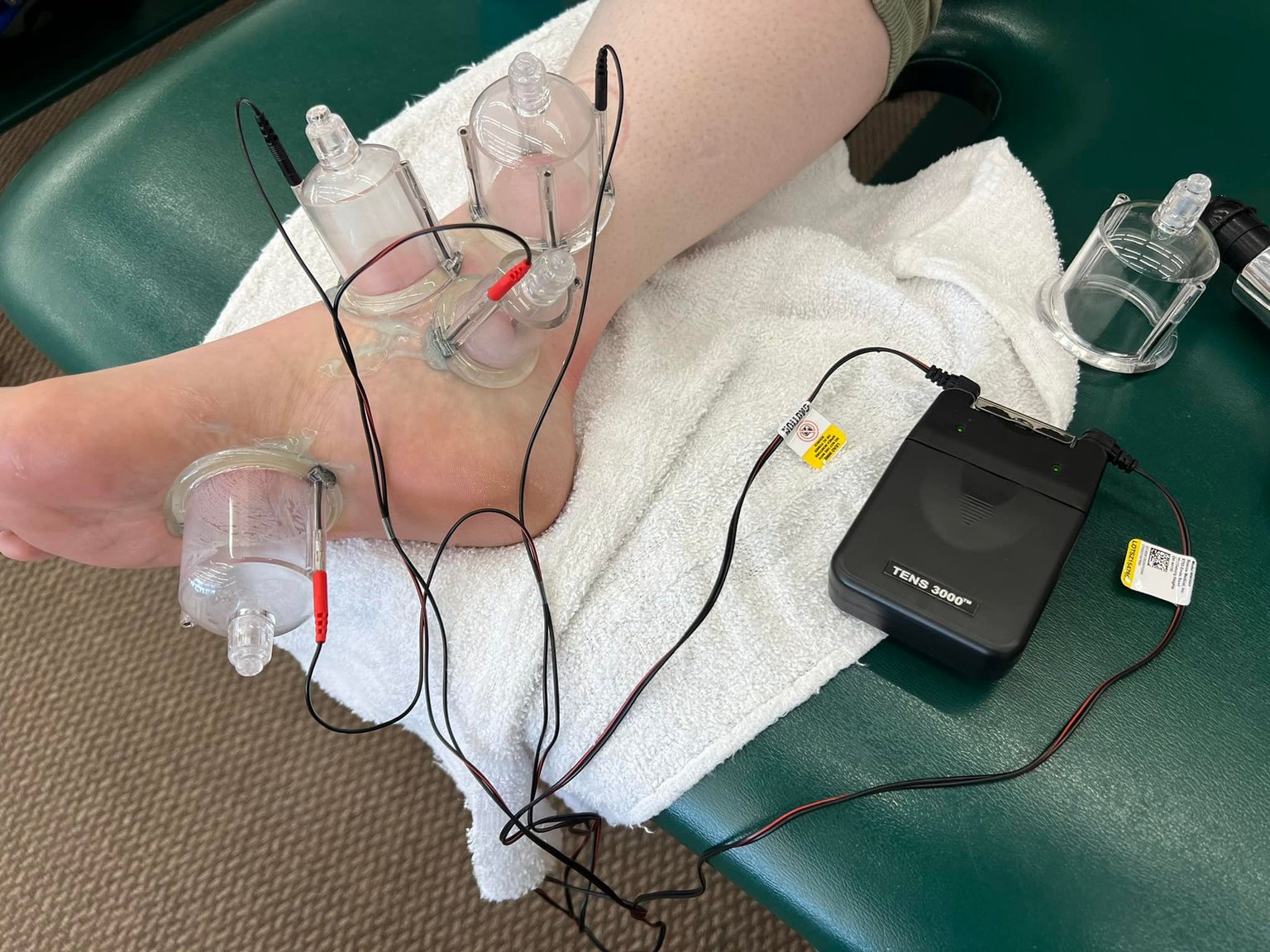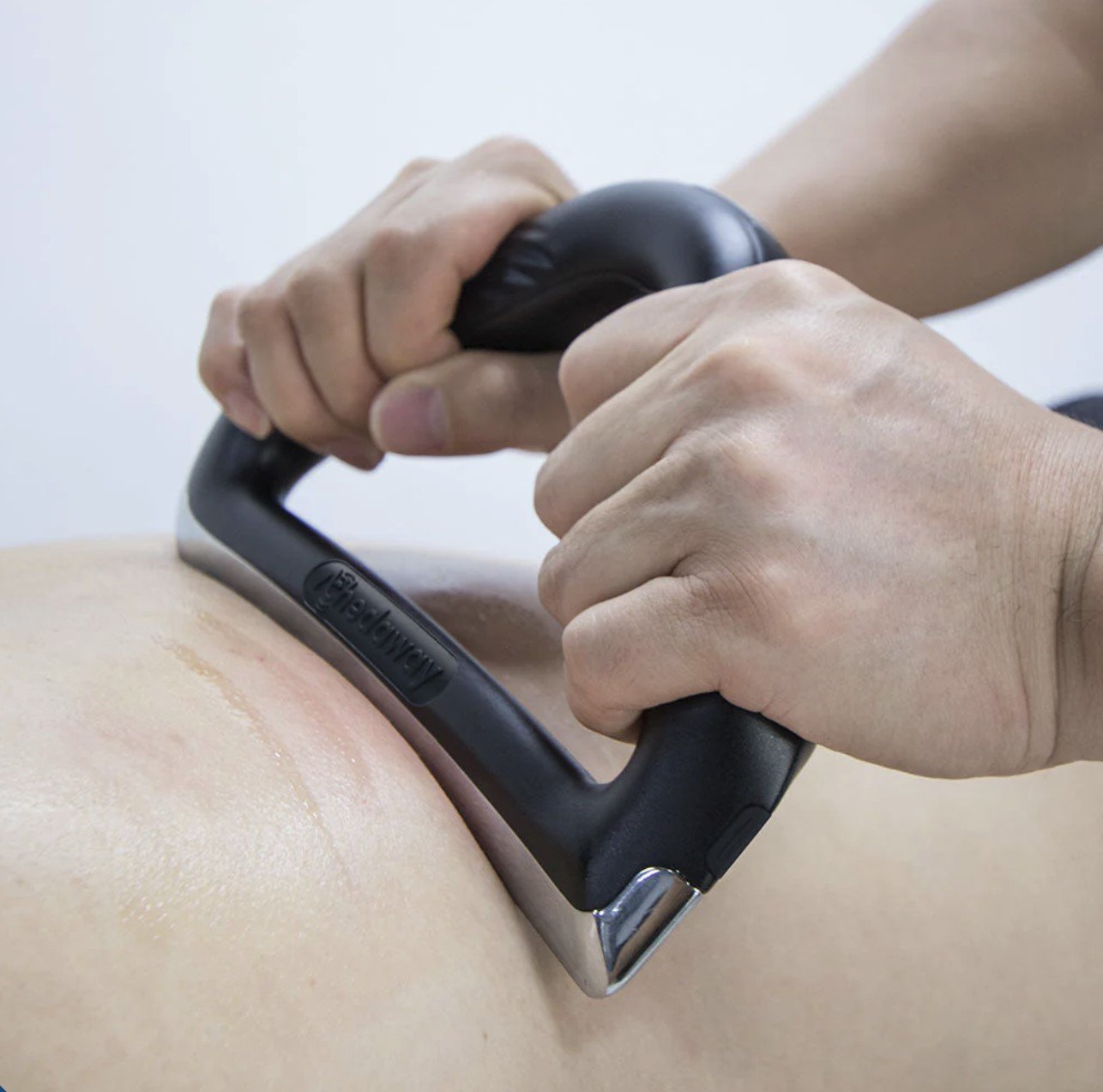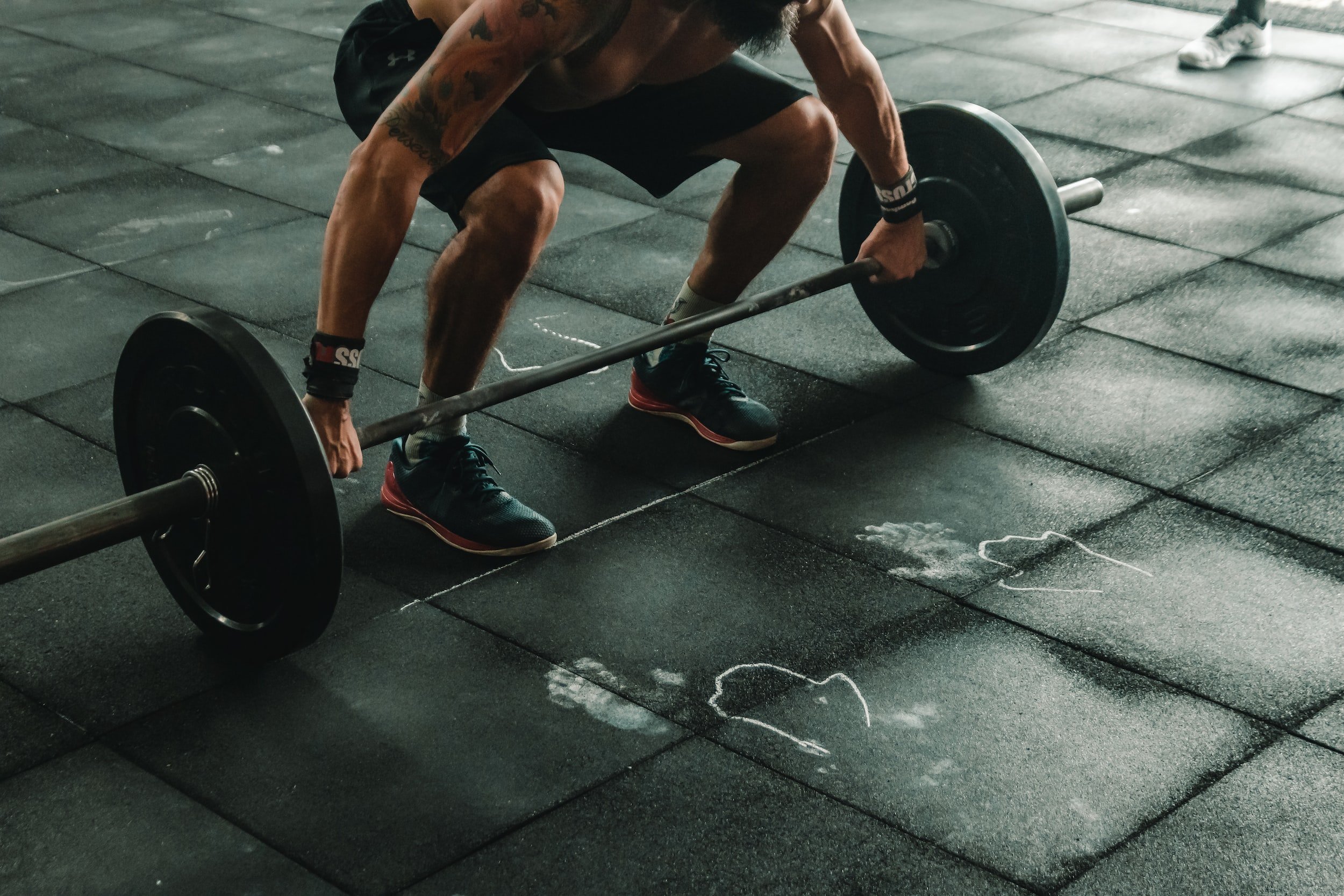SERVICES
Electro-Acupuncture / Percutaneous Electrical Nerve Stimulation
Cupping / Negative Pressure Myofascial Decompression
Electro-Cupping (cupping + transcutaneous electrical nerve stimulation)
Thermal Guasha / Instrument-Assisted Soft Tissue Mobilization
Photobiomodulation aka Red Light & Near Infrared Light Therapy
Infrared Negative Ion Pulsed Electromagnetic Field (PEMF) Therapy
Sequential Compression Therapy
Postural Assesssment with Corrective Exercises
SPORTS & ORTHOPEDIC ACUPUNCTURE
Sports and orthopedic acupuncture are specialized forms of acupuncture that are used to treat a variety of musculoskeletal injuries and conditions.
Sports acupuncture is specifically focused on helping athletes recover from injuries and improve their performance. It can be used to treat a wide range of sports-related injuries, including muscle strains, joint pain, and ligament injuries. Sports acupuncture can also be used to help athletes prepare for competition and recover from intense training sessions.
Orthopedic acupuncture is a form of acupuncture that focuses specifically on treating musculoskeletal disorders such as chronic pain, arthritis, injuries, and other conditions affecting the bones, nerves, muscles, tendons, ligaments, joints, and connective tissues of the body, as well as post-surgical pain and recovery. It is used to help reduce inflammation, improve joint mobility, and promote healing in damaged tissues.
Sports and orthopedic acupuncture practitioners use a combination of traditional and modern Chinese acupuncture techniques (e.g., motor point acupuncture, myofascial trigger point acupuncture/dry needling, electro-acupuncture, etc.) and Western orthopedic diagnostic methods to assess and treat patients. They typically begin by conducting a thorough physical examination and assessing the patient's medical history and lifestyle factors to develop a personalized treatment plan.
Both sports and orthopedic acupuncture require specialized training and knowledge of anatomy, biomechanics, and the specific needs of athletes, active individuals, and the aging population. They can be used as standalone treatments or in combination with other therapies such as physical therapy, chiropractic, or massage to achieve optimal results.
MOTOR POINT ACUPUNCTURE
Motor points are specific locations on the surface of the body where electrical stimulation can elicit a motor response, or a contraction of a specific muscle. These points are also known as neuromuscular junctions or motor endplates, and they are the areas where the nerve that innervates a muscle comes into contact with the muscle fibers.
Motor point acupuncture is a specialized form of acupuncture that targets specific motor points in the body, and are identified using palpation techniques and knowledge of anatomy.
Motor point acupuncture is used in sports medicine and rehabilitation to improve muscle function, strengthen weak or injured muscles, reduce pain and inflammation, improve range of motion, and promote healing. By applying electrical stimulation to the motor points, acupuncturists can activate the muscles in a targeted manner via neuromodulation, which can help to improve muscle strength, coordination, and control. This technique can also be used to help manage pain by stimulating the release of endorphins (the body's natural painkillers), as well as improve local tissue perfusion and blood flow.
MYOFASCIAL TRIGGER POINT ACUPUNCTURE / DRY NEEDLING
Trigger points are hyperirritable spots or nodules within taut bands of muscle fibers that can cause pain, tenderness, and other symptoms in local or referred areas. They are also known as myofascial trigger points.
Trigger points can develop as a result of various factors, including muscle strain, injury, poor posture, or repetitive motions. They may also be associated with underlying medical conditions, such as fibromyalgia, chronic fatigue syndrome, or tension headaches.
The symptoms of trigger points can vary depending on their location and severity. Common symptoms include local or referred pain, tenderness, stiffness, weakness, and limited range of motion. Trigger points can also cause sensory disturbances, such as numbness, tingling, or a burning sensation.
Trigger points can be a source of significant discomfort and can interfere with daily activities. Early recognition and treatment can help to alleviate symptoms and prevent the development of chronic pain conditions.
Myofascial trigger point acupuncture / dry needling is often used in combination with other forms of acupuncture, such as electro-acupuncture, to provide a comprehensive approach to pain management and healing.
ELECTRO-ACUPUNCTURE (percutaneous electrical nerve stimulation)
Electro-acupuncture is a form of acupuncture that involves the use of small electrical currents applied to the acupuncture needles. It is a modern adaptation of traditional acupuncture to enhance the therapeutic effects of acupuncture.
During an electro-acupuncture treatment, small electrodes are placed on the acupuncture needles and delivers a gentle electrical current through them. The current can be adjusted in frequency, intensity, and duration to target specific areas and conditions.
The electrical current stimulates the nervous system and promotes the release of endorphins and other neurotransmitters, which can help to reduce pain, inflammation, and muscle tension, and enhance blood flow and promote tissue healing.
CUPPING / MYOFASCIAL DECOMPRESSION
Cupping aka myofascial decompression is a manual therapy technique that involves the use of suction cups to create negative pressure on the skin and underlying tissues.
During cupping therapy, suction cups are placed on specific areas of the body, typically over tight or painful muscles. The suction created by the cups can help to lift and separate the fascial layers, which are connective tissues that surround and support muscles, bones, and organs.
The negative pressure of the suction can also increase blood flow and stimulate the healing process, reduce pain and inflammation, and improve range of motion. Cupping is commonly used to treat muscle and joint pain, sports injuries, and musculoskeletal disorders.
ELECTRO-CUPPING (myofascial decompression + transcutaneous electrical nerve stimulation)
Electro-cupping is a therapeutic technique that combines the principles of cupping therapy with electrical stimulation. It involves the use of suction cups placed on specific areas of the body, which are then connected to an electrical stimulation device.
The suction created by the cups helps to lift and separate the fascial layers, which are connective tissues that surround and support muscles, bones, and organs. The electrical stimulation can then be used to target the underlying muscle tissue, nerve fibers, and acupuncture points.
The electrical stimulation can be adjusted in intensity and frequency to provide different therapeutic effects. For example, low-frequency electrical stimulation can help to relax muscles and reduce pain, while high-frequency stimulation can stimulate the nervous system and promote healing.
Electro-cupping is commonly used to treat muscle and joint pain, sports injuries, and musculoskeletal disorders. It can also be used to improve circulation, reduce inflammation, and enhance athletic performance.
GUASHA / INSTRUMENT-ASSISTED SOFT TISSUE MOBILIZATION (IASTM)
Guasha or Instrument-Assisted Soft Tissue Mobilization (IASTM) is a manual therapy technique that involves the use of specially designed tools to treat musculoskeletal injuries and pain.
During an guasha therapy, a hand-held instrument with a smooth, blunt edge is used to apply pressure and friction to the affected soft tissues. The instrument is moved over the skin in a back-and-forth motion, applying pressure to the underlying tissues to break up adhesions, scar tissue, and fascial restrictions.
The goal of guasha is to improve tissue mobility and promote healing by increasing blood flow and reducing inflammation. It can be used to treat a variety of conditions, including tendinitis, fasciitis, muscle strains, and joint pain.
Guasha is a useful manual therapy technique that can be incorporated into a comprehensive treatment plan for individuals with musculoskeletal pain or dysfunction. It can be used alone or in combination with other therapies, such as acupuncture and cupping.
PHOTOBIOMODULATION (Red Light & Near Infrared Light Therapy)
Photobiomodulation (PBM) is a non-invasive therapeutic technique that involves the use of low-level light therapy (LLLT), typically in the red and near-infrared spectrum, to stimulate biological processes within the body. PBM uses low-power lasers or light-emitting diodes (LEDs) to deliver light energy to cells, tissues, and organs. This energy is absorbed by the cells and triggers a cascade of biochemical reactions that can improve cellular function and promote healing.
PBM works by stimulating cellular metabolism, increasing the production of ATP (the energy currency of the cell), promoting the release of nitric oxide, a vasodilator that improves blood flow and oxygenation to the tissues, activates cell signaling pathways, and promotes the release of growth factors and cytokines.. These effects can lead to improved tissue repair, reduced inflammation, and pain relief.
PBM has been shown to have a variety of therapeutic effects, including reducing pain and inflammation, accelerating wound healing, promoting tissue repair, improving circulation, and reducing muscle fatigue. It is used in a variety of medical and cosmetic applications, including in the treatment of chronic pain, musculoskeletal disorders, wound healing, neurological disorders, traumatic brain injury, and skin conditions.
We use the PlatinumLED Biomax R+ | NIR+ Advanced Spectral Output which harnesses six different red and near infrared wavelengths of lights (630nm, 660nm, 810nm, 830nm and 850nm plus a trace amount of 480nm in the blue region).
PULSED ELECTROMAGNETIC FIELD THERAPY (PEMF)
Pulsed electromagnetic field (PEMF) therapy is a type of therapy that uses electromagnetic fields to promote healing and improve overall wellness. It involves the use of a device that emits electromagnetic waves in short pulses, which are directed toward a specific area of the body or used for whole-body treatment.
PEMF therapy has been shown to have a variety of potential health benefits, including reducing pain and inflammation, improving circulation, enhancing bone healing, reducing stress and anxiety, and promoting better sleep. It has been used to treat a variety of conditions, including arthritis, back pain, migraines, depression, and fibromyalgia, among others.
PEMF therapy works to stimulate the body's cells and tissues, which then triggers a cascade of biochemical reactions that promote healing and regeneration. PEMF therapy is generally considered safe, although it may not be appropriate for everyone, particularly those with implanted medical devices (e.g., pacemaker, etc.) or who are pregnant. It is always best to consult with a healthcare professional before beginning any new type of therapy.
We use the HigherDOSE Infrared PEMF Mat which also provides infrared heat and twenty pounds of healing crystals layered inside the mat, which produce negative ions (i.e., antioxidants) when heated.
NORMACTEC DYNAMIC AIR COMPRESSION RECOVERY SYSTEM
NormaTec is a type of compression therapy that is designed to help improve circulation and recovery in the limbs. The NormaTec system uses a series of inflatable sleeves that are worn on the legs, arms, or hips. The sleeves are connected to a control unit that inflates and deflates them in a specific pattern, using compressed air to massage the limbs.
The NormaTec system works by applying dynamic compression to the limbs, which helps to increase blood flow and lymphatic drainage. The sleeves inflate sequentially, starting from the foot or hand and moving upwards, creating a wave-like motion that pushes fluid up towards the heart. This helps to reduce swelling and inflammation, as well as remove waste products from the muscles.
The NormaTec system also uses a patented technology called PULSE, which stands for "peristaltic pulse dynamic compression". This technology uses a series of overlapping zones in the sleeves, which creates a pulsing sensation that mimics the natural movement of the muscles. This helps to promote relaxation and reduce muscle soreness, which can improve recovery after exercise or injury.
We use the Hyperice Normatec 3 Dynamic Air Compression Recovery system to provide a comfortable and effective way to improve circulation, promote recovery, improve your training, maximize your performance, and advance your wellness.
POSTURAL & FUNCTIONAL ASSESSMENT WITH CORRECTIVE EXERCISES
Postural and functional assessments are two important components of a physical evaluation.
Static postural assessment involves observing and analyzing a patient's standing posture to evaluate the alignment of the head, neck, shoulders, spine, hips, knees, and feet, and look for any deviations from the normal range of motion or alignment. This assessment is important because poor posture can contribute to a wide range of musculoskeletal problems, such as back pain, neck pain, etc. By identifying postural imbalances, the practitioner can develop a treatment plan to improve posture and reduce pain with various treatment modalities and corrective exercises.
Functional assessment involves evaluating a patient's ability to perform everyday activities. The therapist will assess the patient's strength, flexibility, balance, and coordination, and look for any limitations or deficits that may be affecting their ability to function.
Corrective exercises are exercises designed to address these imbalances and improve overall posture and function. These exercises may focus on strengthening weak muscles, stretching tight muscles, improving mobility and flexibility, and retraining movement patterns.
Back Injuries
Acute & chronic low back pain, Lumbar sprain/strain, Facet joint injury, Sacroiliac joint (SI joint) pain, Spondylosis (degenerative joint/disc disease), Lumbar disc injury (bulge, protrusion, herniation), Sciatica, Spondylolisthesis, Throacolumbar junction syndrome, Thoracic spine pain
Head & Neck Injuries
Myospasms (localized neck pain), Facet joint injury (torticollis), Sprain/strains (whiplash), Spondylosis (degenerative joint/disc disease), Muscle tension headache, Migraine headache, Trigeminal neuralgia, Temporomandibular disorder (TMD), Bell’s palsy, Post-stroke recovery
Shoulder Injuries
Frozen shoulder (adhesive capsulitis), Rotator cuff tendinopathy, Subacromial pain syndrome, Shoulder impingement syndrome, Thoracic outlet syndrome, Bicipital tenosynovitis/tendinopathy, SLAP lesion/labral tear, AC joint sprain/shoulder separation, Subacromial bursitis, Glenohumeral internal rotation deficit (GIRD), Shoulder dislocation, Arthritis
Hip Injuries
Hip flexor strain, Adductor/groin strain, Arthritis, Hip joint strain, Femoroacetabular impingement (FAI, CAM, Pincer), Labral injury/tear, Gluteal tendinopathy, Trochanteric bursitis/Greater trochanteric pain syndrome, Piriformis syndrome/Deep gluteal syndrome, Nerve entrapment syndromes, Pudendal neuralgia
Thigh & Knee Injuries
Hamstring strain, Patellofemoral syndrome (runner’s knee), Patellar tendinopathy (jumper’s knee), Iliotibial band (IT band) syndrome, Knee meniscus injury, Knee ligament injury (ACL, PCL, MCL, LCL), Baker’s cyst, Osteoarthritis
Leg, Ankle, Foot Injuries
Ankle sprain (ATFL, CFL, PTFL), Anterior & Medial tibial stress syndrome (shin splints), Calf strain, Achilles tendinopathy, Peroneal tendinopathy, Plantar fasciitis/fasciosis, Tibialis posterior tendinopathy, Morton’s neuroma, Stress fracture (metatarsal, tibial), Tarsal tunnel syndrome, Arthritis
Elbow & Forearm Injuries
Lateral epicondylitis (tennis elbow), Medial epicondylitis (golfer’s elbow), Triceps tendinopathy, Olecranon bursitis, Nerve entrapment syndromes (cubital tunnel, supinator, pronator teres), Arthritis
Wrist, Hand, Finger Injuries
Wrist tendinitis, Carpal tunnel syndrome, De Quervain’s tenosynovitis, Trigger finger, Finger pulley injury, TFCC tear/injury, Ganglion cyst, Wrist bone displacement, Fracture, Arthritis





















